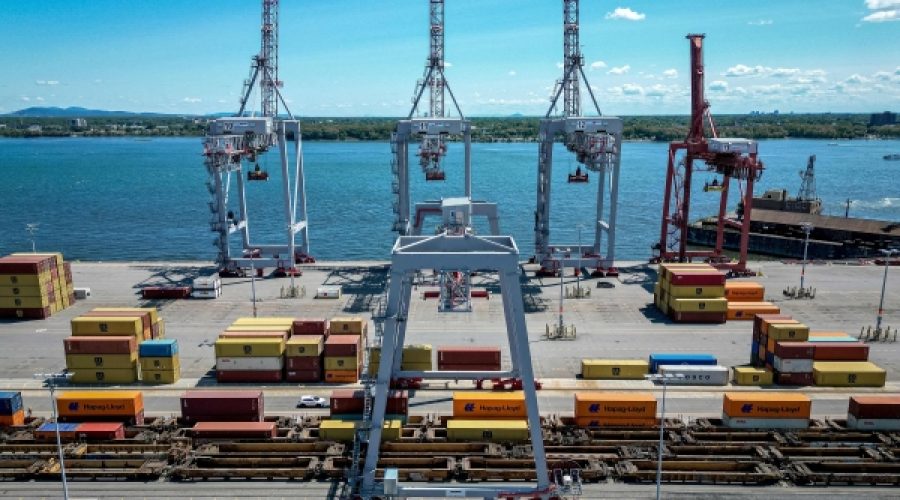Understanding Trump’s Tariffs: Implications for Businesses in a New Multipolar Global Economy
Donald Trump’s New Tariffs Accelerate the Shift to a Multipolar Global Economy
Donald Trump’s recently announced tariffs are not merely reshaping global trade; they are actively contributing to the emergence of a multipolar economic landscape. This shift away from a U.S.-dominated system is increasingly evident and gaining momentum.
“Multipolarity now defines the direction of global trade,” stated Nigel Green, CEO of deVere Group, one of the world’s largest independent financial advisory and asset management firms. He emphasized that these tariffs are compelling countries to reevaluate their trade and strategic priorities, leading to the rise of multiple centers of economic power and influence.
Starting August 7, the United States will implement tariffs affecting nearly all major trading partners. Countries with a trade deficit with the U.S. will incur a minimum tariff of 15%, while Canada faces a 35% tariff and Brazil a staggering 50%. India’s rate stands at 25% and includes a financial penalty for its ongoing energy and defense relationships with Russia, despite its designation as a close U.S. ally.
“The inclusion of India highlights how quickly partners can become pressure points,” Green noted, suggesting that this pressure might push New Delhi towards closer cooperation with its trade rival, Beijing, with long-term implications.
While trade agreements with China and Mexico are still under negotiation, a broader international response is already materializing. “Beijing, Moscow, and increasingly New Delhi are collaborating more on trade, infrastructure, and investment. Long-standing allies such as Switzerland and Taiwan are reassessing their risks, with many governments now seeking to diminish their dependence on U.S. economic influence altogether.”
This situation represents more than just a recurrence of past trade disputes; it signifies a global move away from reliance on the U.S. as the primary economic hub. New trade networks are emerging out of necessity.
In recent months, diplomatic talks with China have intensified, with discussions taking place in Geneva, London, and Stockholm. Beijing aims to maintain a freeze on U.S. semiconductor export controls, while Washington seeks action on fentanyl, greater access for American businesses, and increased Chinese purchases of U.S. goods. However, the true narrative extends beyond these negotiations.
“Tariffs are becoming entrenched as permanent aspects of the new economic order," Green explained. Nations are actively developing systems that can function independently of U.S. approval. The scope of the U.S. tariff list spans continents, affecting Switzerland with a 39% tariff, and South Africa, Libya, Algeria, and Serbia with rates ranging from 30% to 41%. Taiwan, Israel, Pakistan, and Norway fall within a 15–20% bracket, underscoring the deliberate and comprehensive nature of these tariffs.
“Markets are adapting. Capital is reallocating. Supply chains are being restructured around regional strengths rather than global scales,” Green added.
The dollar retains its dominant position, but its influence is no longer unassailable. “Central banks are exploring alternatives, and the urgent diversification of reserves is underway,” he noted. New regional trading blocs are also advancing payment systems that reduce reliance on U.S. regulations.
“This fragmentation represents the new norm. The post-war consensus on trade and financial cooperation is diminishing, giving rise to a landscape characterized by multiple economic power centers, each with distinct rules and scopes of influence.”
For investors, these changes have immediate implications. “Correlations are weakening, and policy risks are on the rise. The geopolitical realignment is no longer theoretical; it is unfolding now,” Green cautioned, urging those who expect a return to the previous system to reconsider their outlook.
He concluded, “This evolution establishes a new world order, where influence is decentralized, and alignments are increasingly transactional. For global investors, this marks the onset of a pivotal realignment. Economic and trade power will become more fragmented, intensifying competition for influence.”
Special Analysis by Omanet | Navigate Oman’s Market
The imposition of sweeping tariffs by the US signals an urgent need for businesses in Oman to reevaluate their trade strategies and forge new partnerships within emerging multipolar markets. This shift presents both opportunities for diversification and risks associated with geopolitical volatility. Smart investors should consider focusing on regional alliances and alternative supply chains, as the global economic landscape is rapidly transforming.



